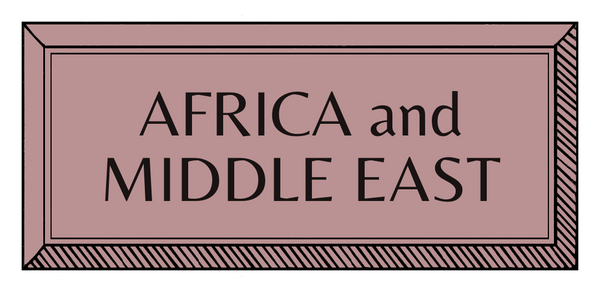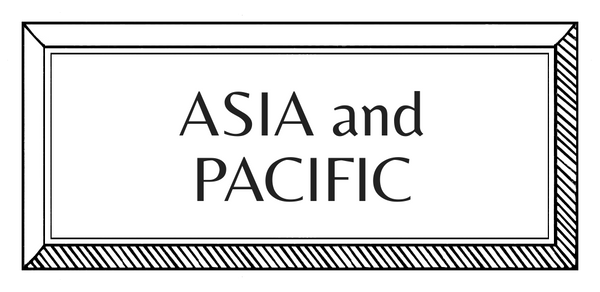CRAFT STORIES | ASIA | UZBEKISTAN | WEAVING
Khiva Silk Workshops
Exploring the captivating blend of history, craftsmanship, and vibrant color at the heart of Khiva, Uzbekistan's most remote Silk Road city, Susan Scollay delves into the unique atmosphere of the Ichan Qala, the revival of traditional arts, and the dedicated artisans of the Khiva Silk Carpet Workshop. Here, ancient techniques and natural dyes revive intricate designs inspired by the region's illustrious Timurid past.
Walking through the centre of Khiva, the most remote of Uzbekistan’s famed Silk Road cities, the 21st-century visitor is surrounded by the visual pleasure of what UNESCO describes as, ‘the most homogenous example of Islamic architecture in the world.’ More than 2000 residents live and work within the Ichan Qala, the walled city that was a slave trading centre in medieval times. Many are skilled artisans working in centuries-old regional specialisations that have been revived since the fall of the Soviet Union in the early 1990s.
There are few cars in the old city’s narrow streets and the acoustic environment is an intriguing blend of the natural and man-made sounds that give old Khiva its unique soundscape and sense of place. The narrow, cobbled streets muffle the footsteps and conversations of tourists at souvenir stalls as well as Khivans going about their daily lives.
Not far from the Kalta Minor, the imposing truncated tower of an unfinished minaret completely covered in tiles glazed in shimmering shades of blue, turquoise and brown, the hammering and chiselling sounds of wood carvers drift across the laneway. But just around the corner, approaching the Yuqub Bey Khoja Madrasa, the soft sound of women singing is carried on the breeze. The melody accompanies the rhythmic thud of carpet weaving combs beating down the weft threads of the silk carpets taking shape on the looms set up in the cool interior of what was built in 1873 as a religious school for boys.

The Khiva Silk Carpet Workshop was founded in 2001, as a joint initiative of UNESCO and the international development organisation, Operation Mercy. The aim was to revive lost skills in a region with a long history of carpet production and expertise in spinning and dyeing the silk for which Khiva was renowned in the nineteenth century.
Today more than 40 women take turns at the carpet looms in the workshop and nearby another group stitch suzanis, traditional Uzbek embroideries. All use local silk dyed with traditional methods under the supervision of the master dyer and project director.
A clear yellow comes from a homely mix of onion skins and vine and quince leaves. A more subdued golden colour, characteristic of the region, is produced from the skins of local pomegranates. Walnut husks give various hues of brown used in outlining delicate motifs. Exquisitely soft reds, pink and peach tones emerge from the cauldrons of dried and powdered madder root mixed with a variety of mordants. Indigo for producing all the shades of blue is imported. A good green can only be made by the expensive and time-consuming method of using two dye baths – yellow overdyed with blue.
This rainbow of masterful colour enlivens the design repertoire of the carpet production. Rather than follow the better-known 19th century design vocabulary of other carpet weaving enterprises, the Khiva project chose to use the mostly geometric and interlaced star and stylised floral forms used extensively by Uzbekistan’s 15th and 16th-century Timurid rulers.
Since very few carpets from that era have survived, the workshop founders looked for inspiration to carpets depicted in historic Timurid miniature paintings (see image below) and to the designs on glazed tiles and carved wooden doors on Uzbekistan’s astoundingly intact legacy of Timurid architecture.
Each carpet takes three women about three months to complete. Seated cross legged at upright looms, they carefully follow designs set out for them on graph paper. Once the weaving is finished – coloured knot by coloured knot – even the weavers with physical disabilities that were previously excluded from meaningful employment, work together to cut the finished carpet from the loom and laboriously trim the knotted pile to the velvety finish that enhances the precision of the design motifs and the sheen and luminous colour of the precious silk.

Detail: Shirin falling in love with a portrait of Khusrau, from a manuscript of the Khamsa of Nizami dated AH 900 (1494-95 AD), The British Library, Or.6810.
Words by Susan Scollay
Images by Miguel Flores-Vianna












































